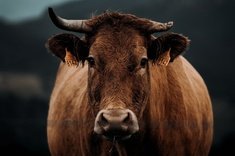Featured Quizzes
User Quizzes
Create Quiz
Data and Charts
Badges and Games
About JetPunk
JetPunk Shop
Dark Mode

All Large Domesticated Mammals
Can you guess all the animals?
Not including tame or partially domesticated species.
Source: https://en.wikipedia.org/wiki/List_of_domesticated_animals
Rate:
Last updated: October 21, 2021
You have not attempted this quiz yet.
More quiz info >>
| First submitted | October 21, 2021 |
| Times taken | 2,438 |
| Average score | 46.7% |
| Rating | 2.61 | Report this quiz | Report |
4:00
Enter answer here
0
/ 15 guessed
Time Used
00:00
Best Time
00:00
The quiz is paused. You have remaining.
Scoring
You scored / = %
This beats or equals
% of test takers
also scored 100%
The average score is
Your high score is
Your fastest time is
Keep scrolling down for answers and more stats ...
|
|
jayhiatt
+20
Level 70
Oct 28, 2021
Shouldn't this specify just livestock, rather than large mammals, since what is considered large is very subjective? Many dogs, for example, are larger than many goats, but they aren't included.
XYU
+1
Level 62
Oct 28, 2021
Can't believe badger isn't on it
Cog
+4
Level 75
Mar 23, 2022
I can
frenchy88
+17
Level 54
Oct 28, 2021
should allow Camel rather than require specifics
sumguy
+7
Level 84
Oct 28, 2021
It was inconceivable that camel wasn't on the list, so I tried dromedary and bactrian separately, which shouldn't have been necessary. Given that there are feral herds of water buffalo in Australia, Papua New Guinea, Tunisia, Argentina, Colombia, Guyana, Suriname, Brazil, and Uruguay, I wonder if they don't qualify as "partially domesticated".
PersonWithFish
+5
Level 65
Oct 29, 2021
Bactrian and Dromedary camels are two separate species that were domesticated separately. Putting just camel as an answer for both would negate that fact. Water buffalo have been domesticated in several areas. Many different domesticated species have wild populations. This does not negate the fact that the animals are domesticated. Think of feral pigs as an example.
Lemondance
+16
Level 67
Oct 30, 2021
Maybe you could have the answer fields for the camels read "____ Camel" so we know to enter the species
partdavid
+2
Level 71
Aug 3, 2022
I like the reduction in ambiguity by relying on a source for the information, and this is indeed a fun piece of trivia to know. However, because of how people usually use these common names (especially in the case of camels), it doesn't make for a very fun quiz without a breadcrumb to indicate it. My suggestion would be accept Camel|Dromedary for the answer "Camel (dromedary)", since nearly all camels are dromedaries, and as a hint that there is more than one type of camel on the quiz.
kalbahamut
+3
Level 82
Jan 6, 2022
I gave up when the first domesticated animal I guess - bison - was not on here.
PersonWithFish
+2
Level 65
Jan 8, 2022
Bison are not fully domesticated.
CrazyWombat
+5
Level 54
Mar 27, 2022
By technicality if that’s the logic you’re using neither are most of the animals on this list lol. I’d redo the instructions at the very minimum because there is wholeheartedly too many contradictions in this quiz.
blizzrd33
+2
Level 79
Jan 11, 2022
If you want to split hairs about the difference between bactrian camels and dromedary camels, or banteng and domestic cattle, suggest change the name of the quiz to "Unique wild animals and when they were domesticated", rather than the current focus on "large domesticated mammals" which implies generic names such as sheep, cow and camel.
RhymingCouplet
+2
Level 69
Mar 23, 2022
What about the Asian elephant?
kitshef
+3
Level 84
Mar 23, 2022
Not sure what is meant by "not including tame". The source shown lists horse, dromedary and yak as "tame" (and possibly others - stopped comparing after those three).
partdavid
+2
Level 71
Aug 3, 2022
The source at this time has two separate tables, one for "Domesticated animals" and one for "Tame and partially domesticated animals", which is surely the distinction the quiz maker is using (independent of the "Degree and type of domestication column").
cmr0
+2
Level 70
Aug 3, 2022
Deers should be here
New and Popular
Save Your Progress
Copyright H Brothers Inc, 2008–2024
Contact Us | Go To Top | View Mobile Site
